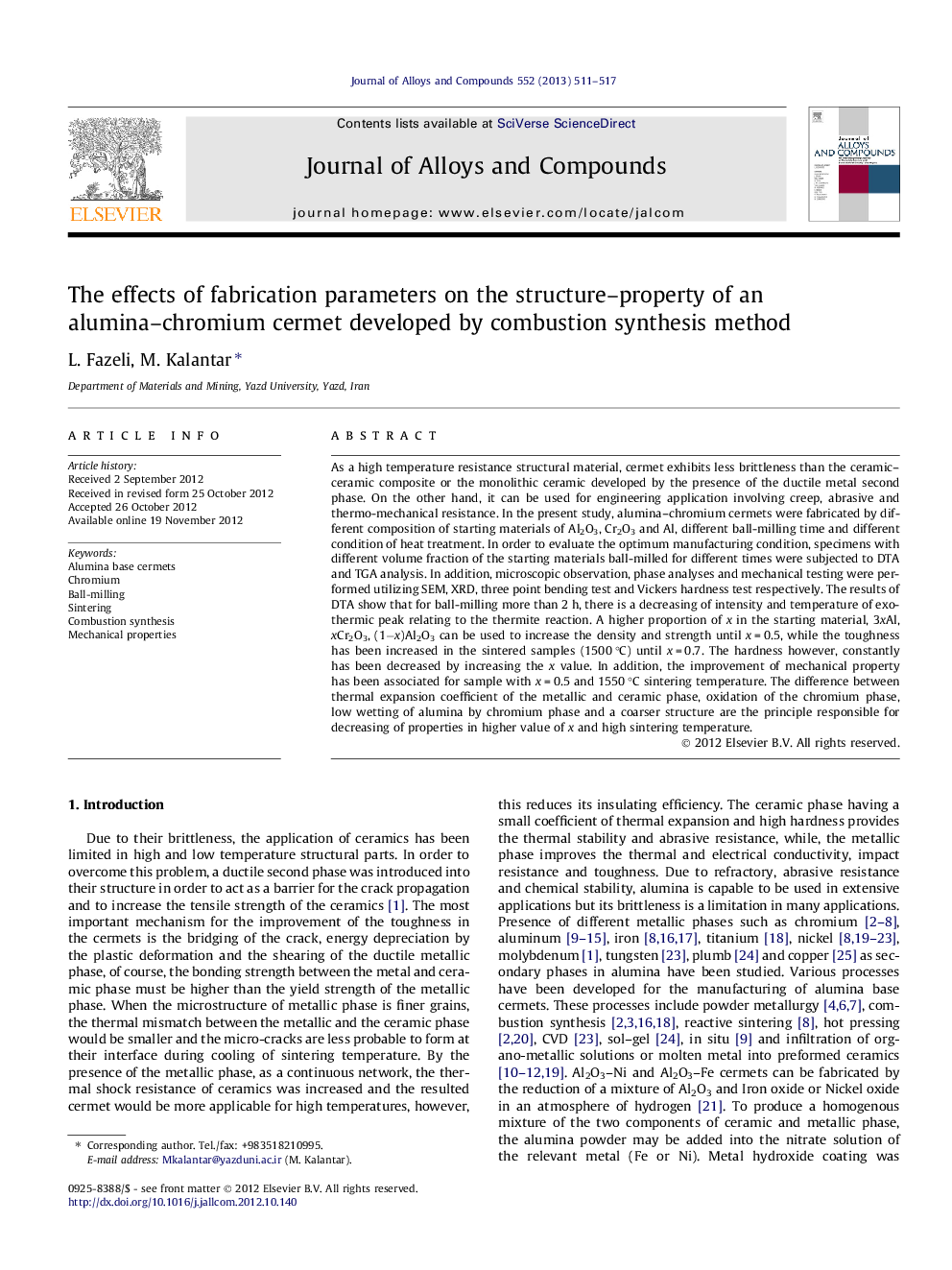| Article ID | Journal | Published Year | Pages | File Type |
|---|---|---|---|---|
| 1614864 | Journal of Alloys and Compounds | 2013 | 7 Pages |
As a high temperature resistance structural material, cermet exhibits less brittleness than the ceramic–ceramic composite or the monolithic ceramic developed by the presence of the ductile metal second phase. On the other hand, it can be used for engineering application involving creep, abrasive and thermo-mechanical resistance. In the present study, alumina–chromium cermets were fabricated by different composition of starting materials of Al2O3, Cr2O3 and Al, different ball-milling time and different condition of heat treatment. In order to evaluate the optimum manufacturing condition, specimens with different volume fraction of the starting materials ball-milled for different times were subjected to DTA and TGA analysis. In addition, microscopic observation, phase analyses and mechanical testing were performed utilizing SEM, XRD, three point bending test and Vickers hardness test respectively. The results of DTA show that for ball-milling more than 2 h, there is a decreasing of intensity and temperature of exothermic peak relating to the thermite reaction. A higher proportion of x in the starting material, 3xAl, xCr2O3, (1−x)Al2O3 can be used to increase the density and strength until x = 0.5, while the toughness has been increased in the sintered samples (1500 °C) until x = 0.7. The hardness however, constantly has been decreased by increasing the x value. In addition, the improvement of mechanical property has been associated for sample with x = 0.5 and 1550 °C sintering temperature. The difference between thermal expansion coefficient of the metallic and ceramic phase, oxidation of the chromium phase, low wetting of alumina by chromium phase and a coarser structure are the principle responsible for decreasing of properties in higher value of x and high sintering temperature.
► Fabrication of cermets by combined method of mechanical alloying + combustion synthesis. ► Fabrication of dense and high quality cermet in an atmosphere protected layer in place of the inert atmosphere. ► Using a method more effective and more economic in comparable with other processes. ► A good condition for formation of spinels (xAl, yCr)2O3, and xAl2O3·yCr2O3 in grain boundary.
